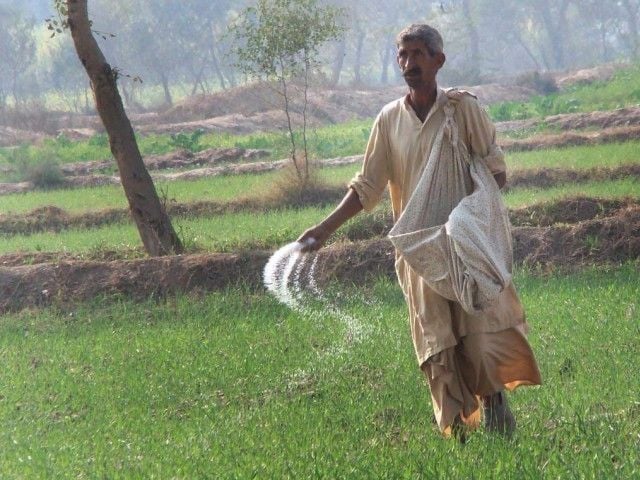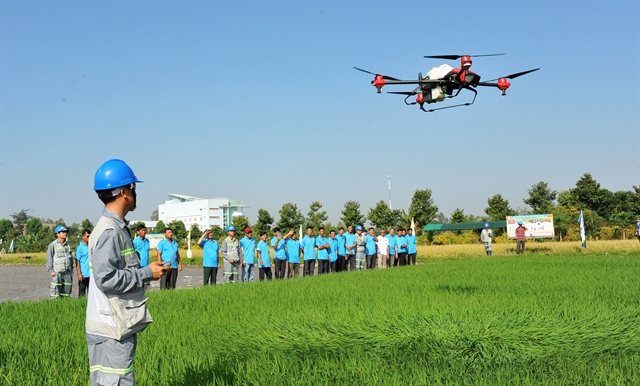Tags
‘Why isn’t organic fertiliser being utilised?’
Integration of organic fertilisers with soil chemical nutrition could reverse degradation process.

KARACHI:
Addressing the shortage of inorganic fertilisers, agricultural experts and researchers stressed the need for the inclusion of organic fertilisers with soil chemical nutrition. This integration could reverse the degradation process and enhance crop yield in a sustainable way.
They said that growers avoid using organic fertilisers because the nutrient concentration of indigenous/organic fertiliser is low. To fulfil the nutrient requirements of current high-yield varieties, these fertilisers would be needed in bulk quantity. Additionally, the release of nutrients from organic fertilisers upon decomposition is a slow and time-dependent process.
“Now, the soil has lost its potential to break the stagnancy in increasing crop yield. Around 60% of the world’s soil has been degraded and lost its potential due to various stresses, including climate change. Furthermore, the use of modern fertiliser is a major contributor to greenhouse gas emissions and other global-scale use of resources at unsustainable rates. Soil biodiversity is also at risk due to excessive use of modern chemical fertiliser. The inclusion of organic fertilisers with soil chemical nutrition could reverse the degradation process and enhance crop yield in a sustainable way,” says University of Agriculture Faisalabad Institute of Soil and Environmental Sciences Prof Dr Zahir Ahmad Zahir, who is also President of Soil Science Society of Pakistan (SSSP).
“We have to feed our population using inorganic methods to produce more crops, but we should utilise both organic and inorganic fertilisers for better results. It is difficult to make soil fertile through organic fertilisers immediately due to high temperatures in the country. Pakistan’s lands are called mineral soil,” says Sindh Agriculture University (SAU) Dean of Faculty of Crop Production Prof Dr Inayatullah Rajpar.
“We call for capacity building of growers who are not more aware of soil patterns as green manuring is better, while application of organic fertiliser gives a long-term benefit, reducing dependence on inorganic fertilisers. Growers must use mixed fertilisers to maintain the health of the soil, while deploying crop rotation to enhance efficiency. Farmers ought to focus on the right sources, including the timing for fertilisers, applying the appropriate method, and an adequate amount of fertilisers. Not every grower is able to purchase costly Urea and diammonium phosphate (DAP), as around 30% of peasants are still using organic manure,” says SAU Department of Soil Sciences Prof Dr Ghulam Murtaza Jamro.
Organic fertilisers
Organic fertilisers include animal manure, poultry manures, press mud, crop residues/straw, bones, wood ashes, wool waste, guano, fish, cotton seed meal, blood meal, feather waste, hair and fur waste, mora meal, beet refuse, scutch, horn and hoof meal, chalk, and marl, etc. The processed/composted forms of old fertilisers available in the Pakistani market include Organic-77, Argi-vet, Sheru, Bazooka, tabarTorr, vigoroot, etc.
Difference between modern and conventional fertilisers
Modern fertilisers are very useful in achieving crops’ optimum yield potential compared to old/conventional fertilisers. The yield difference/gap between modern and conventional fertiliser is up to 50%. If growers achieve the yield of cereal (wheat or maize) up to 60 and 120 mounds per acre with modern fertilisers, the yield with conventional fertilisers will be 50% less. Modern fertilisers are rich sources of nutrients and show a significant increase in crops yield compared to old fertiliser.
In olden days
In the olden days, the materials first utilised by farmers for fertiliser were animal manure, bones, wood ashes, wool waste, guano, fish, cotton seed meal, blood meal, feather waste, hair and fur waste, mora meal, beet refuse, scutch, horn and hoof meal, chalk, and marl.
Side effects of modern or chemical fertilisers
Modern fertilisers are prepared from nutrient-concentrated materials, so their losses (60-70% at the field scale) in terms of volatilisation/fixation/precipitation/leaching are high in the soil, sediment, air, and water. Besides polluting the environment, they also disturb ecosystem stability and functioning. The production process of these synthetic fertilisers is very energy-intensive, making their cost-effectiveness dubious and unaffordable for the farming community, particularly in developing countries like Pakistan.
https://tribune.com.pk/story/2452113/why-isnt-organic-fertiliser-being-utilisedPublished Date: January 5, 2024







